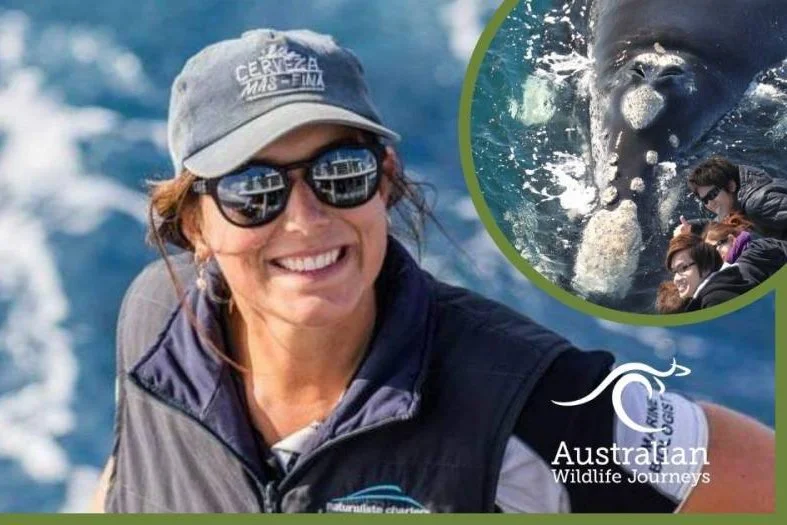Learning about the photo identification programs with Pia Markovic
There’s an iPhone feature that sorts photos using facial recognition, categorising frequently photographed faces into groups. Interestingly, it can work for Southern Right Whales too, albeit a little more haphazardly. “Basically, there are different ways of identifying all whales. And because Southern Rights have distinctive callosities (louse-covered callouses) on their faces (rostrum), we essentially use facial recognition to identify them,” Naturaliste Charters marine biologist Pia Markovic explains. “This is usually painstakingly categorised by a scientist, but emerging technology is helping advance this. It even works on phones if you have enough photos of the same whale.”
Pia explains that Naturaliste Charters research staff use different identification methods for different whale species when recording and photographing their unique marks. “With Humpback Whales we look for scarring on their dorsal fin and other unique markings on their body. With Blue Whales we again look at the dorsal fin as well as look for unique markings on their body. With Orcas we are looking for marks on the dorsal fin, eye patch and saddle patch. And with Sperm Whales we are looking at their tails,” Pia explains.
Guests, too, are encouraged to note down any unique markings on whales they might see while on an expedition, helping Pia and the team of marine biologists expand their information database. “Through photo identification, we learn more about population size and composition, migratory distribution, and individual usage of a resting area over its lifetime,” Pia explains. “The collecting of whale identification images – which is done in a collaborative effort with Western Whale Research – can provide an insight into an individual whale’s life, as well as the species.”
Defining Geographe Bay as an ‘emerging aggregation area’ in 2019 was reward enough for the scientists and Pia. “This means one step closer to protecting these whales,” she says.






